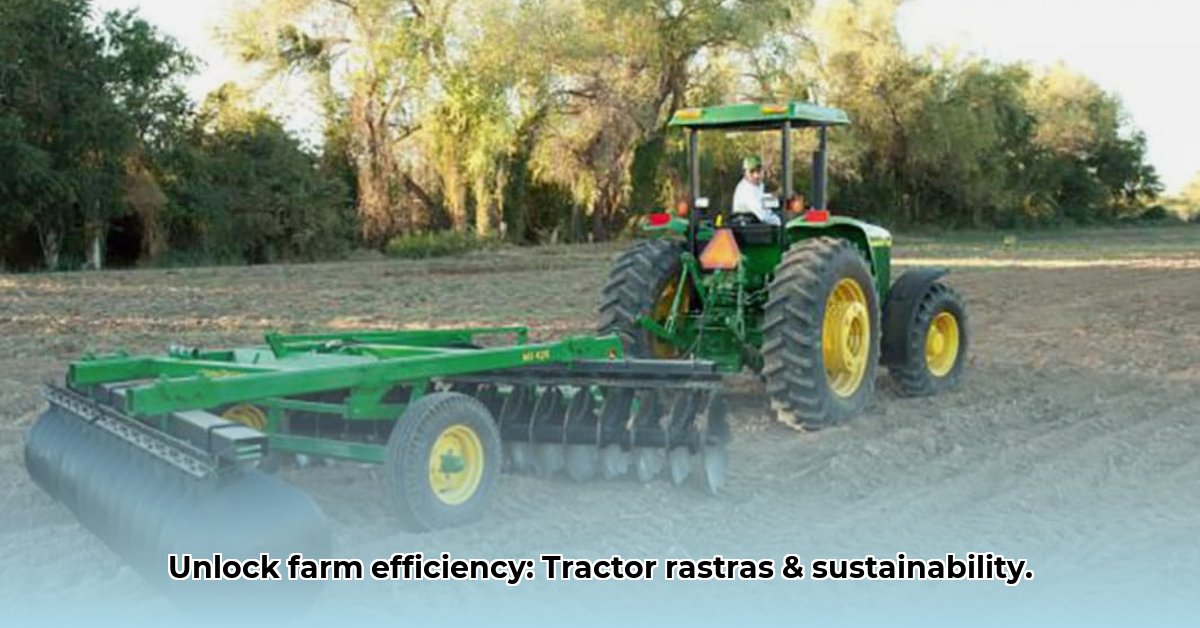
Rastras para Tractor: Optimizing Soil Preparation for Maximum Yield
Choosing the right tractor harrow (rastra para tractor) is crucial for efficient and sustainable farming. This guide focuses on maximizing your farm's potential using data-driven insights and practical advice. We'll explore how to select the ideal harrow for your specific needs and demonstrate how to improve efficiency and reduce your environmental impact. For more information on tractor implements, check out this helpful resource: tractor implements.
Finding the Perfect Harrow: Matching Equipment to Your Farm's Needs
Several key factors influence harrow selection. Farm size dictates the required harrow capacity; a smaller, family-run operation needs a less powerful model than a large-scale farm. Soil type is equally important – heavy clay soil requires a more robust harrow than lighter, sandier soil. Finally, budget constraints must be considered to find the perfect balance of functionality, durability, and cost.
John Deere offers a range of harrows, each designed for various soil conditions and horsepower tractors. The MX225, for example, is renowned for its durability and ease of use. Its self-aligning bearings minimize downtime, maximizing operational time. However, careful comparison of different models is paramount to ensure the selected harrow meets your specific farming requirements.
Data-backed rhetorical question: How much time and money could you save with reduced equipment downtime? John Deere's emphasis on durable components offers significant long-term benefits.
Optimizing Soil Preparation: Efficiency and Crop Health
Effective soil preparation is vital for maximizing crop yields. A properly functioning rastra para tractor breaks up soil clods, creating a level seedbed. This improves seed-to-soil contact, leading to healthier plant growth and increased productivity. Reduced passes across the field translate directly into lower fuel costs and more time for other essential farm tasks.
The harrow's design plays a significant role. For instance, the spacing between discs dramatically impacts soil structure and crop performance. Studies suggest that the difference between 9-inch and 11-inch spacing can affect yields significantly. This underscores the need for meticulous record-keeping of farming practices to tailor your approach for optimal results.
Quantifiable fact: Studies show a significant correlation between disc spacing and crop yields.
Tracking Results: Data-Driven Decision Making
Reliance solely on marketing claims is insufficient. Farmers should systematically collect data quantifying the impact of their rastra para tractor. Maintain detailed records of fuel consumption, soil preparation time, and crop yields – both before and after implementing a new harrow. This data-driven approach substitutes guesswork with evidence-based decision-making.
The following table provides a framework for tracking key performance indicators (KPIs):
| Metric | Before Harrow Use | After Harrow Use | Notes |
|---|---|---|---|
| Fuel Consumption (liters/ha) | Record your fuel usage | Record your fuel usage | Track fuel usage for comparable operations |
| Time spent on soil prep (hrs) | Record your prep time | Record your prep time | Monitor time spent on soil prep tasks |
| Crop Yield (tons/ha) | Record your crop yield | Record your crop yield | Measure yield increase per hectare |
| Soil Health Indicators | Record your soil health data | Record your soil health data | Compare soil health tests (before/after) |
Sustainability: A Long-Term Perspective
The selection of a rastra para tractor is a long-term investment. Therefore, sustainability must be a key consideration. Minimizing fuel consumption and maximizing equipment longevity directly reduces environmental impact and operating costs. A durable harrow reduces the need for frequent replacements and promotes environmentally responsible farming practices.
Human element: As stated by Dr. Amelia Hernandez, Agricultural Engineer at the University of California, Davis: "Sustainable farming practices are crucial for ensuring long-term profitability and environmental stewardship."
Actionable Steps: A Guide to Improved Farm Efficiency
Take these steps to enhance your farm's efficiency and sustainability:
- Assess Your Needs: Carefully evaluate your farm's unique characteristics, including soil type, budget, and scale of operations.
- Compare Models: Thoroughly research available rastra para tractor options, prioritizing features critical to your operation.
- Maintain Detailed Records: Track key performance indicators (KPIs) to measure the impact of the harrow's implementation.
- Seek Expert Advice: Consult agricultural specialists or equipment dealers for tailored advice.
The best rastra para tractor is not solely defined by its initial price; it represents a long-term investment in efficient and sustainable farming. Informed decision-making will yield substantial rewards for years to come.